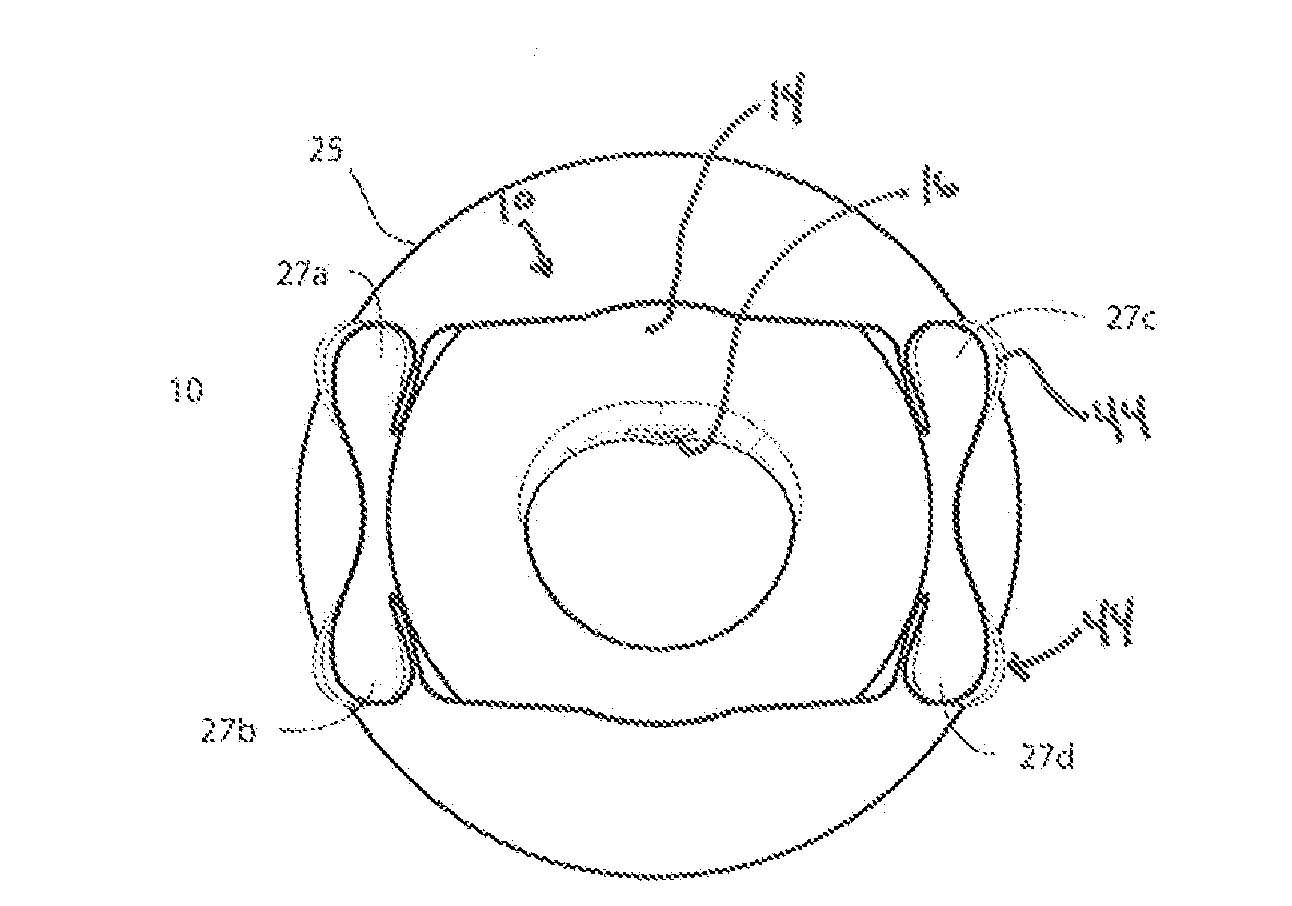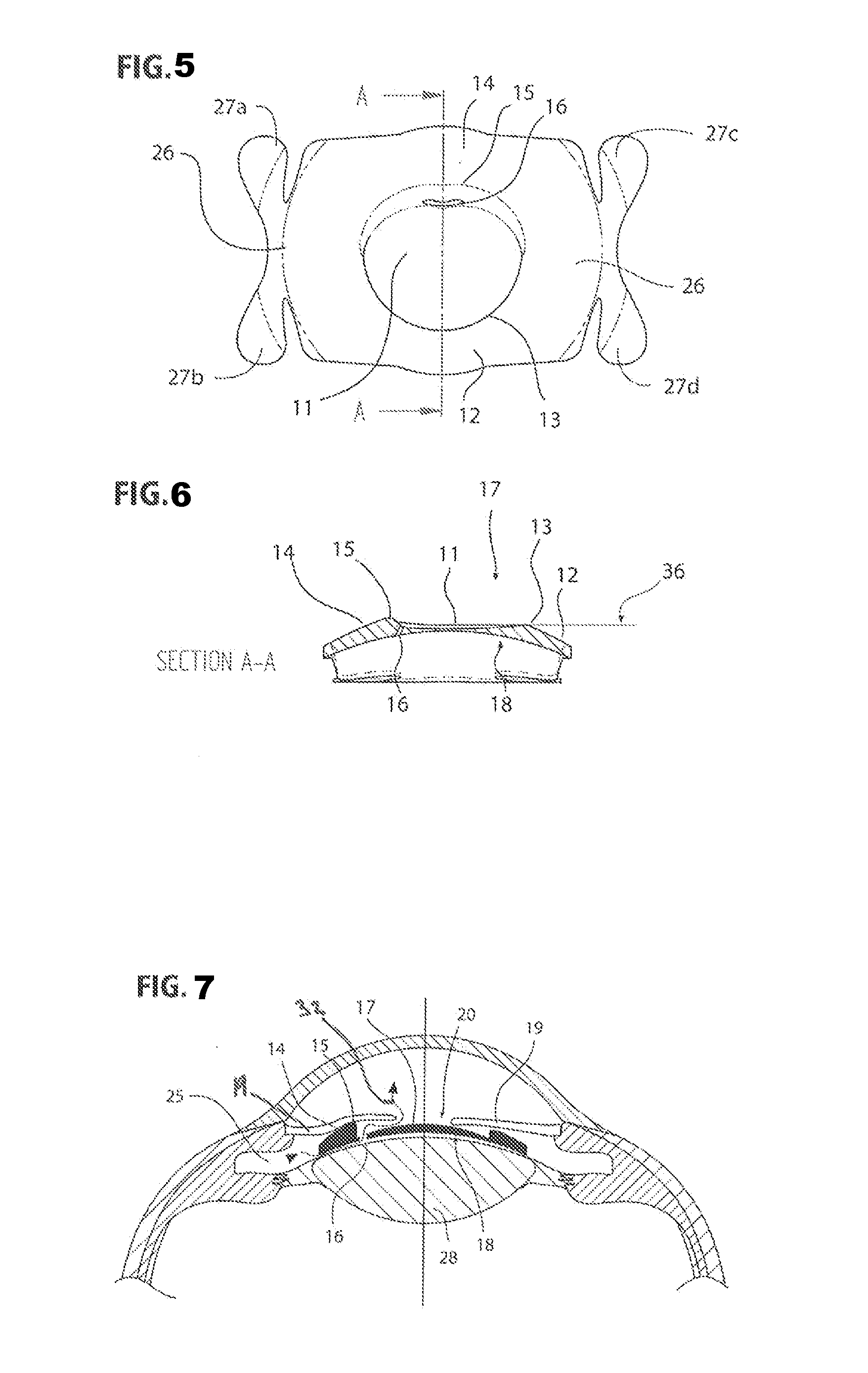Intraocular lens
a technology of intraocular lens and phakic lens, which is applied in the field of intraocular lens, can solve the problems of ciliary sulcus, pcp-iol sizing, and serious complications of patients, and achieve the effects of enhancing the adaptation of pcp-iol 10, eliminating or reducing dysphotopsic effects, and facilitating passage of aqueous humor
- Summary
- Abstract
- Description
- Claims
- Application Information
AI Technical Summary
Benefits of technology
Problems solved by technology
Method used
Image
Examples
Embodiment Construction
[0042]The following detailed description and the appended drawings describe and illustrate some implementations for the purpose of enabling one of ordinary skill in the relevant art to make and use these implementations. As such, the detailed description and drawings are purely illustrative in nature and are in no way intended to limit the scope of the disclosure in any manner. It should also be understood that the drawings are not necessarily to scale and in certain instances details, which are not necessary for an understanding of the disclosure, may have been omitted, such as details of fabrication and assembly.
[0043]In general, FIGS. 1-19 and 24-30 illustrate a posterior chamber phakic intraocular lens (“PCP-IOL”) 10 that adapts to an eye's anatomy to facilitate correction and treatment of ametropia and presbyopia, for example, or to ameliorate or minimize the effects of other eye disorders or vision deficiencies. In some embodiments, PCP-IOL 10 has a haptic 12, a central lens 1...
PUM
 Login to View More
Login to View More Abstract
Description
Claims
Application Information
 Login to View More
Login to View More - R&D
- Intellectual Property
- Life Sciences
- Materials
- Tech Scout
- Unparalleled Data Quality
- Higher Quality Content
- 60% Fewer Hallucinations
Browse by: Latest US Patents, China's latest patents, Technical Efficacy Thesaurus, Application Domain, Technology Topic, Popular Technical Reports.
© 2025 PatSnap. All rights reserved.Legal|Privacy policy|Modern Slavery Act Transparency Statement|Sitemap|About US| Contact US: help@patsnap.com



